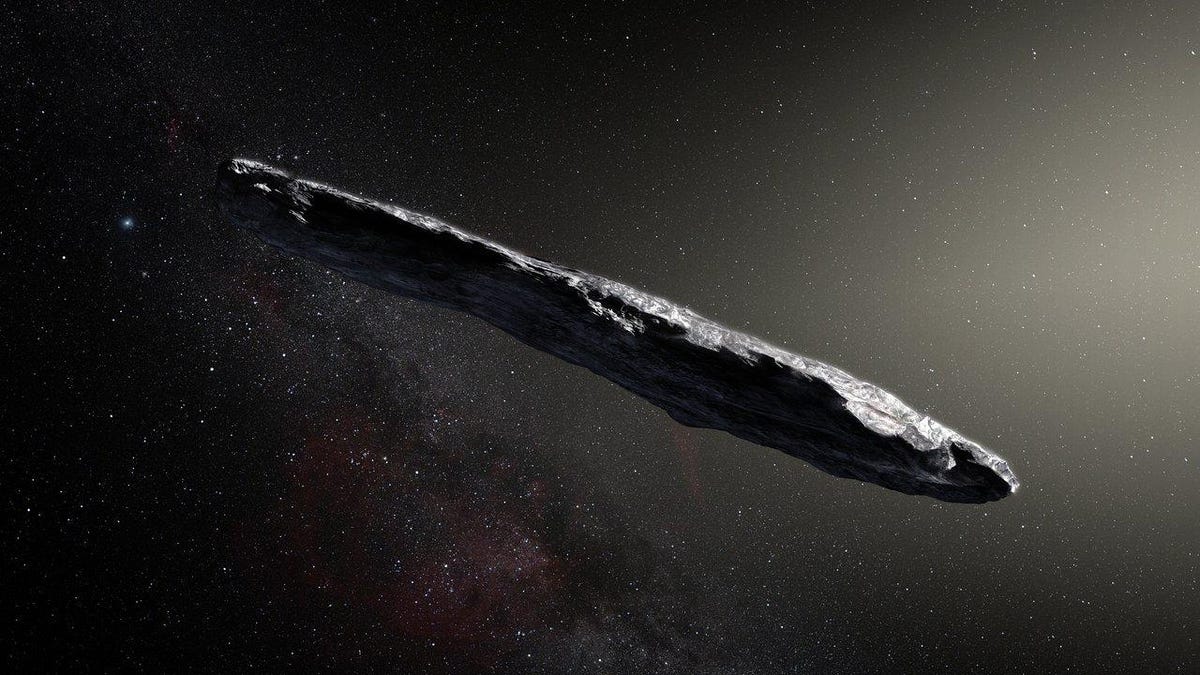Astronomers check 'alien' asteroid thing for actual aliens
The first space rock to visit from beyond our solar system looks a little bit like a spaceship, so scientists are checking it for alien signals.

This artist's impression shows 'Oumuamua, an interstellar asteroid.
Beginning in October, astronomers spotted what seems to be an asteroid, one that's not from around here, speeding through our cosmic neighborhood. Now a group interested in searching for alien intelligence is checking the odd object for signs of life and smarts.
By November, more observations of the object, which has since been given the name 'Oumuamua, revealed its red hue and shape -- unlike most other asteroids which tend to be vaguely spherical, 'Oumuamua is oblong, like a cigar or needle, measuring hundreds of meters long with a width around one-tenth of that.
Scientists from Breakthrough Listen, a project which listens for evidence of civilization beyond Earth, point out that the shape also makes sense for an interstellar spacecraft looking to reduce friction and damage from the abundant gas and dust floating between stars. They plan to use the Green Bank Telescope, a radio telescope in West Virginia, to take advantage of the rare opportunity to check an interstellar object at close range for evidence that it might be sending out signals.
"'Oumuamua's presence within our solar system affords Breakthrough Listen an opportunity to reach unprecedented sensitivities to possible artificial transmitters and demonstrate our ability to track nearby, fast-moving objects," said Andrew Siemion, a project leader and director of the Berkeley SETI Research Center, in a release. "Whether this object turns out to be artificial or natural, it's a great target for Listen."
The researchers say they don't actually expect to detect signs of life or intelligence from the object, but radio observations could provide new clues about 'Oumuamua, including the potential presence of water, ice or gases on or around it.
Breakthrough Listen's observations are set to take place on Wednesday. Hopefully we'll know soon thereafter whether we've been buzzed by E.T. or just grazed by some geologic formation from another corner of the galaxy.
Crowd Control: A crowdsourced science fiction novel written by CNET readers.
Solving for XX: The tech industry seeks to overcome outdated ideas about "women in tech."

